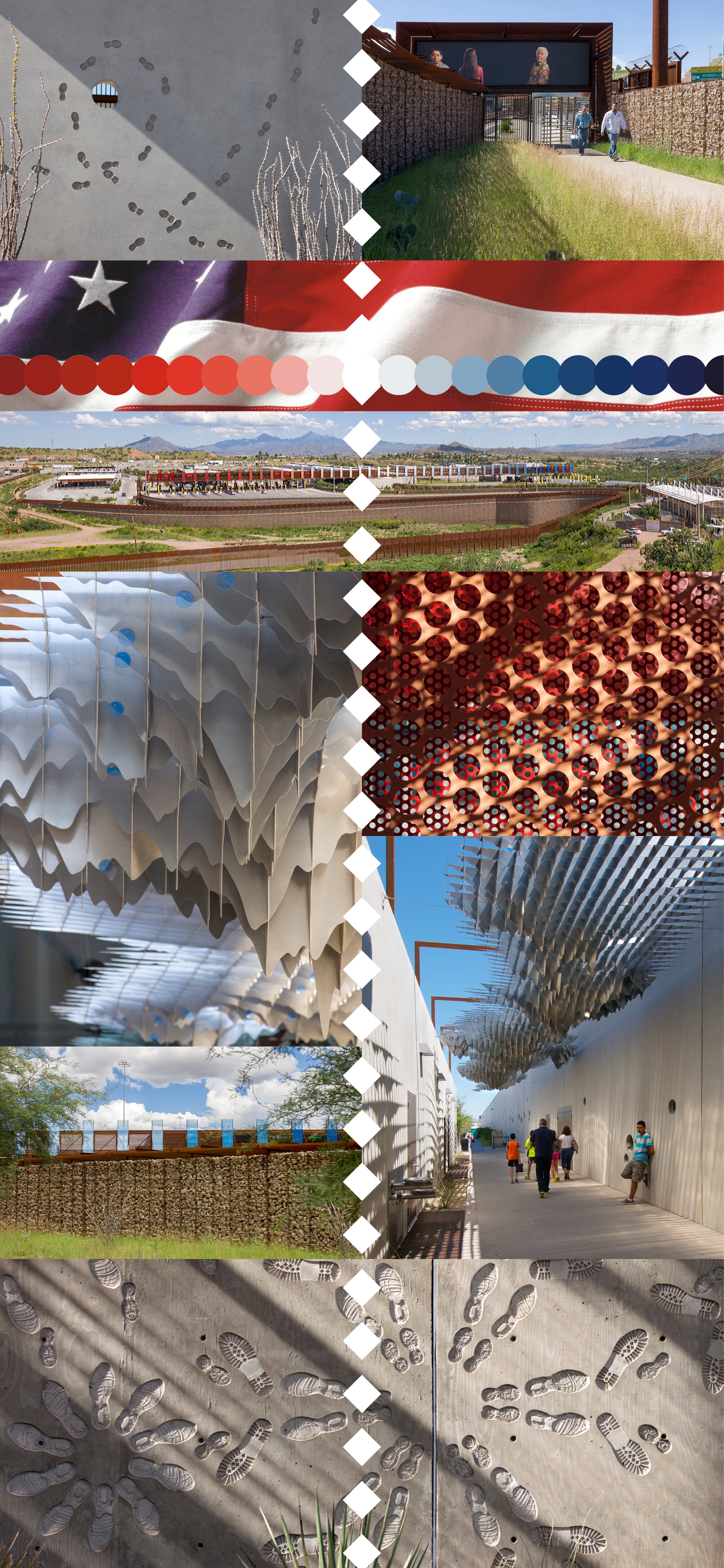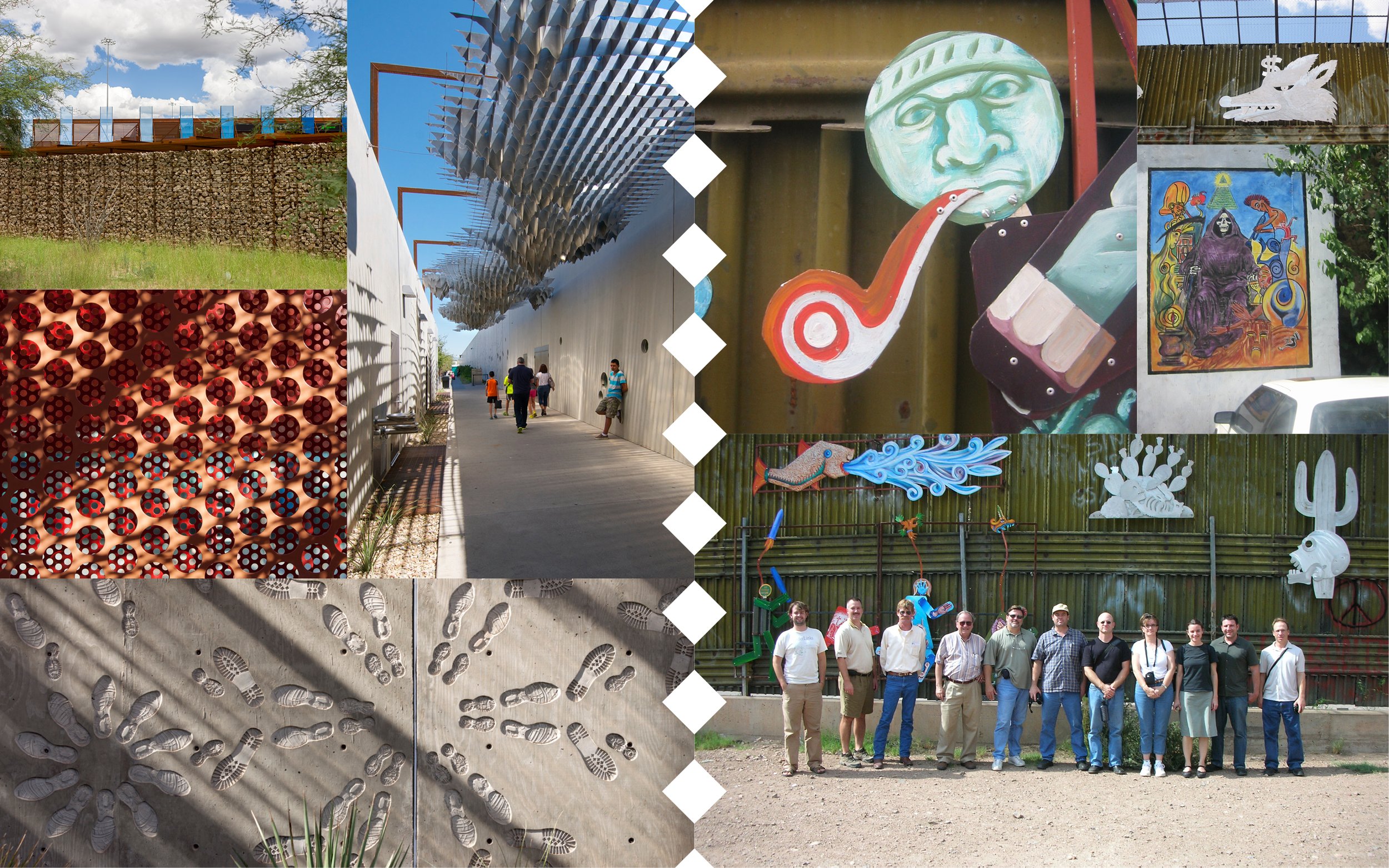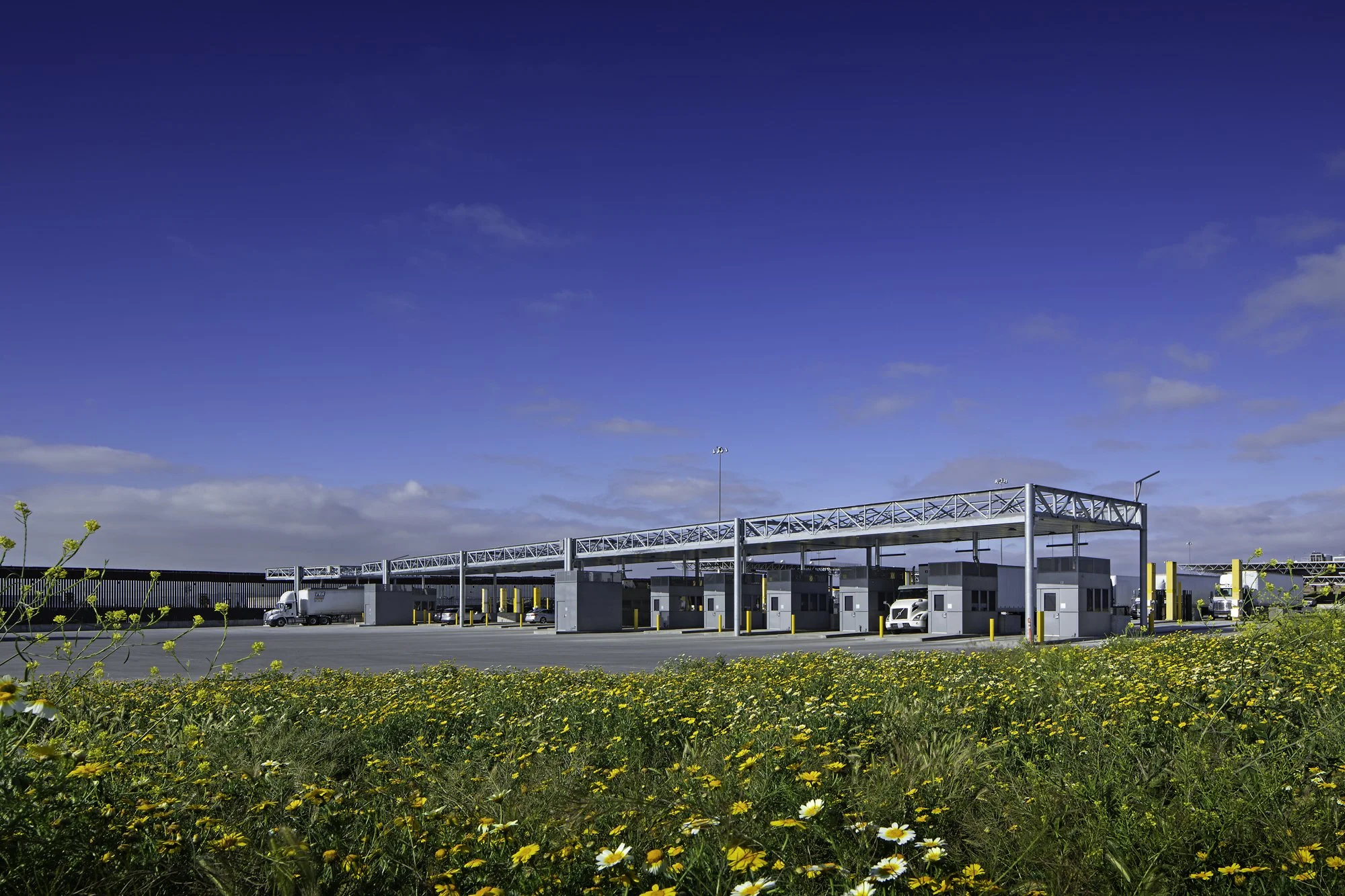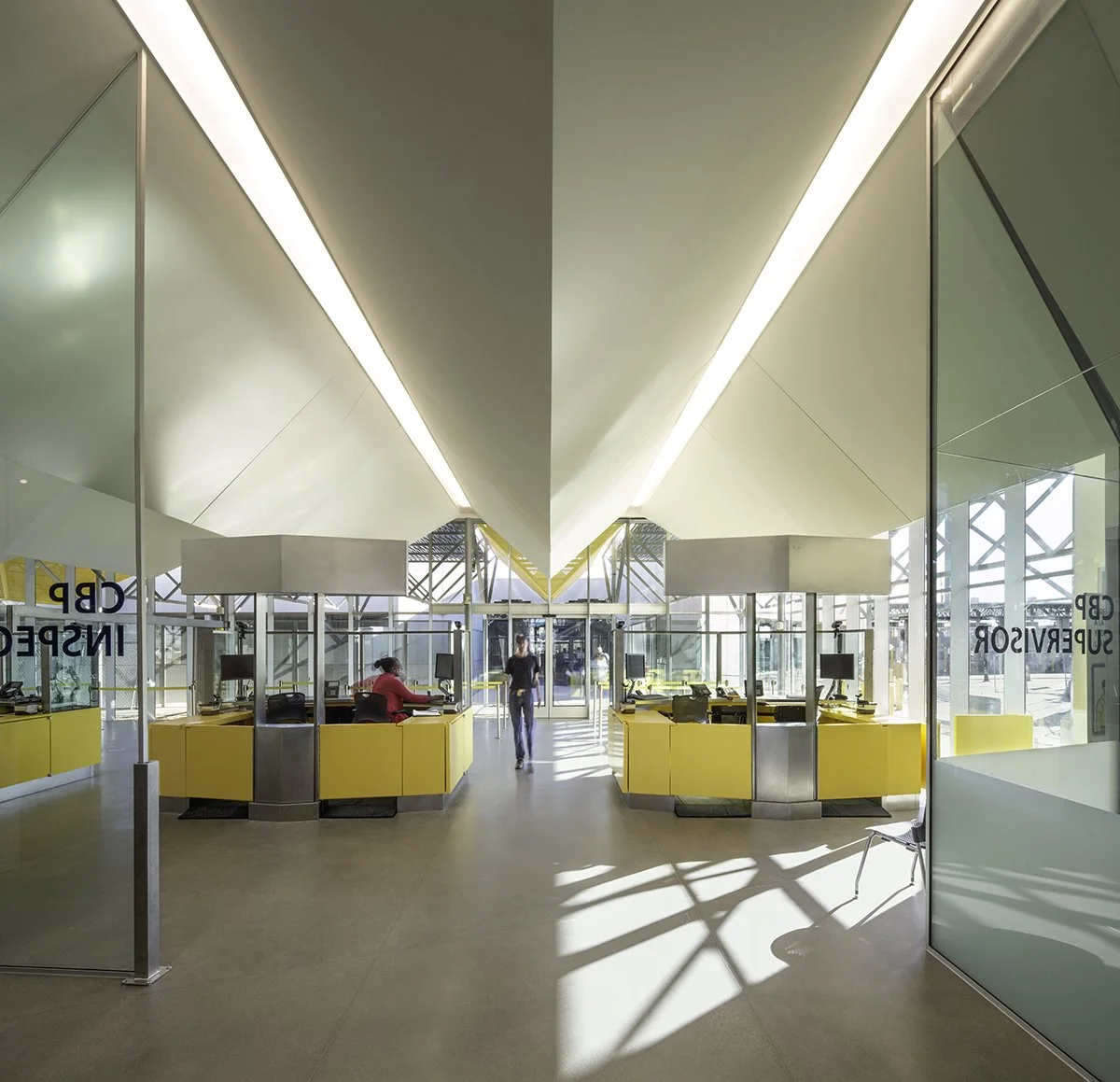

THE SEVEN STORIES OF
BORDER | PORCH
Jones Studio was selected as an exhibitor for PORCH: An Architecture of Generosity, the 2025 United States Pavilion at the 19th International Architecture Exhibition at La Biennale di Venezia. Our exhibit is crafted around one of our most impactful projects that also presents a unique interpretation of the American porch: the Mariposa Land Port of Entry in Nogales, Arizona. As a passage between two countries along one of the world’s most geopolitically fraught borders, Mariposa LPOE seeks to navigate the challenges inherent to its location and charge. Our exhibit, titled Border|Porch, frames a few of these challenges as a series of story panels, each one documenting a different set of dichotomies that are central to the experience of this place. Collectively, these panels become a toolkit to understand a land port of entry as a civic-scale porch: a space of mediation and movement between nations that must carry the weight of all that comes with it.
BORDER LINES |
LINEAS FRONTERIZAS
Alberto Rios, Arizona’s first poet laureate, was originally commissioned by then-Arizona Governor Janet Napolitano to write the poem “Border Lines/Lineas Fronterizas” to commemorate Mexican President Vicente Fox’s visit to Arizona in November of 2003. This poem, prominently featured on an etching at Mariposa, embodies our studio’s approach to our work on the border through our nation’s land ports of entry: that these spaces, in part, shape the communities that they join together, and in our role as architects we must act as stewards of that responsibility.

A weight carried by two
Weighs only half as much
The world on a map looks like the drawing of a cow
In a butcher’s shop, all those lines showing
Where to cut.
That drawing of the cow is also a jigsaw puzzle,
Showing just as much how very well
All the strange parts fit together.
Which way we look at the drawing
Makes all the difference.
We seem to live in a world of maps:
But in truth we live in a world made
Not of paper and ink but of people.
Those lines are our lives. Together,
Let us turn the map until we see clearly:
The border is what joins us,
Not what separates us.
Un peso caragado por dos
no pesa más que la mitad.
El mundo en un mapa parece el dibujo de una vaca
En la carnicería, todas esas líneas mostrando
Dónde cortar.
Ese dibujo de la vaca es también un rompecabezas,
Mostrando cómo caben muy bien juntas
Todas las piezas extrañas.
La manera en que miramos el dibujo
Nos hace ver la diferencia.
Parecemos vivir en un mundo de mapas:
Pero en verdad vivimos en un mundo hecho
No de papel ni de tinta sino de gente.
Esas líneas son nuestras vidas. Juntos,
Demos vuelta al mapa hasta que veamos claramente:
La frontera es lo que nos une,
No lo que nos separa.

A weight carried by two
Weighs only half as much
The world on a map looks like the drawing of a cow
In a butcher’s shop, all those lines showing
Where to cut.
That drawing of the cow is also a jigsaw puzzle,
Showing just as much how very well
All the strange parts fit together.
Which way we look at the drawing
Makes all the difference.
We seem to live in a world of maps:
But in truth we live in a world made
Not of paper and ink but of people.
Those lines are our lives. Together,
Let us turn the map until we see clearly:
The border is what joins us,
Not what separates us.
Un peso caragado por dos
no pesa más que la mitad.
El mundo en un mapa parece el dibujo de una vaca
En la carnicería, todas esas líneas mostrando
Dónde cortar.
Ese dibujo de la vaca es también un rompecabezas,
Mostrando cómo caben muy bien juntas
Todas las piezas extrañas.
La manera en que miramos el dibujo
Nos hace ver la diferencia.
Parecemos vivir en un mundo de mapas:
Pero en verdad vivimos en un mundo hecho
No de papel ni de tinta sino de gente.
Esas líneas son nuestras vidas. Juntos,
Demos vuelta al mapa hasta que veamos claramente:
La frontera es lo que nos une,
No lo que nos separa.
PORCH
LAND PORTS AS
ETHOS |
IT ALL BEGINS WITH AN IDEA
With all that we do, we seek to take the lightest touch on the earth while creating something that gives back to the community around it.





















